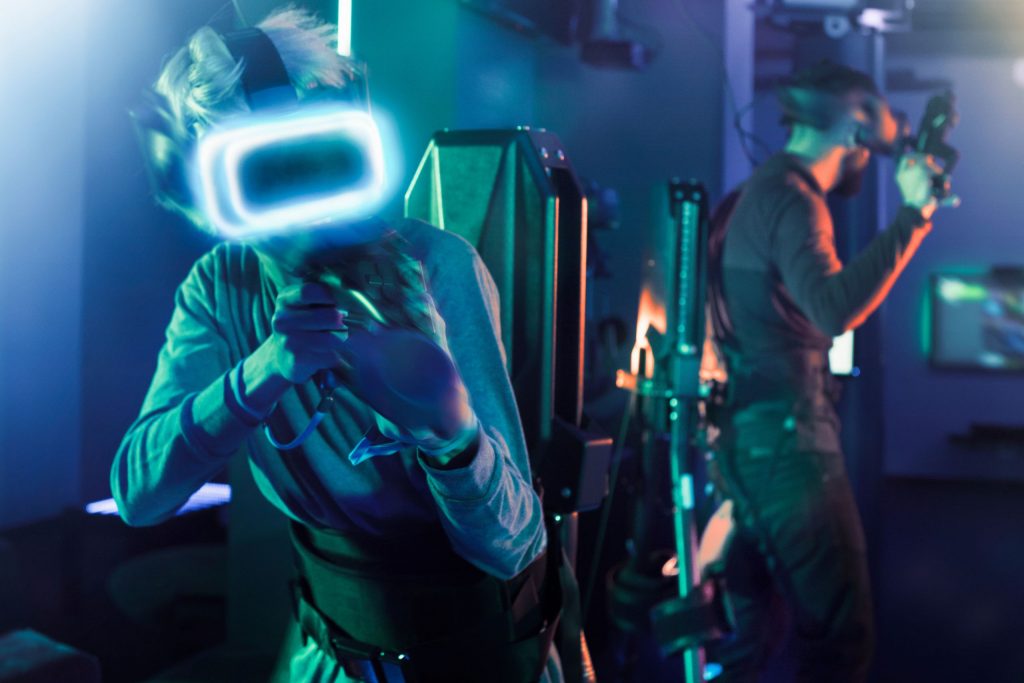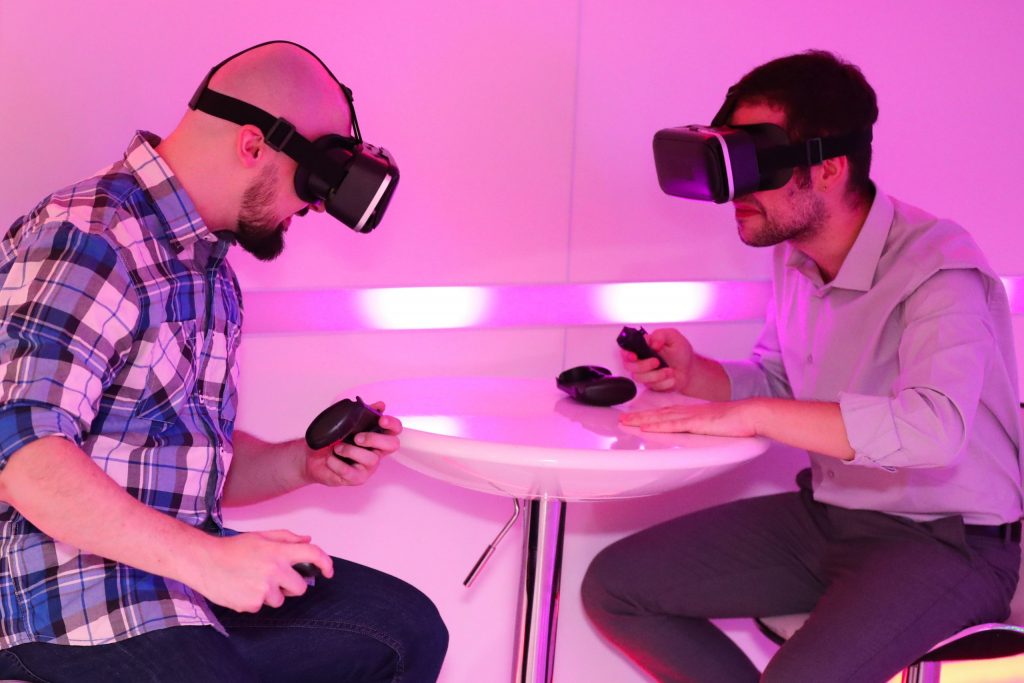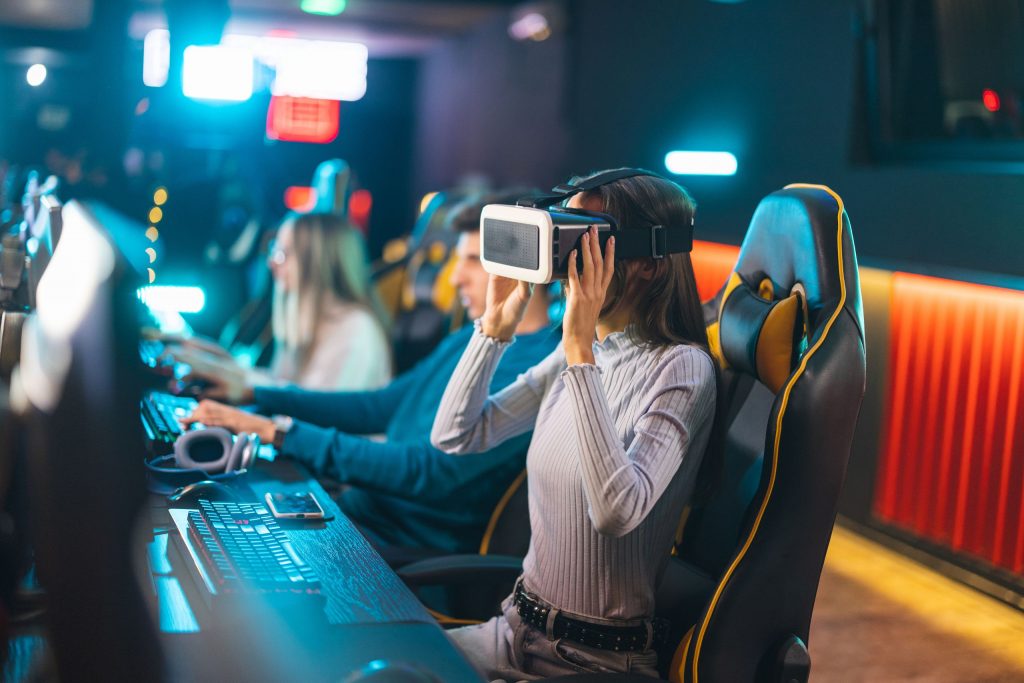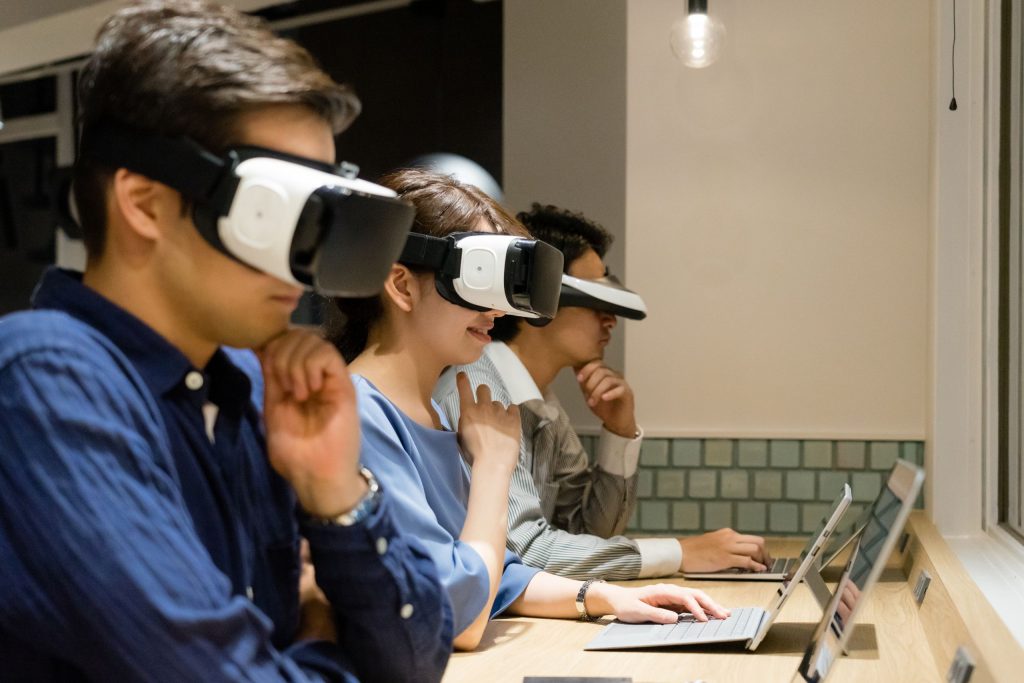Gaming In Another Dimension: The Rise Of VR Esports In Competitive Arenas

Virtual reality (VR) allows one to deliver an immersive experience outside of traditional gaming and change the competitive gaming environment. By letting players physically engage with virtual settings, VR esports develops a new gaming trend by combining current technology with the thrill of rivalry. Not only spectators but also gamers actively traverse three-dimensional worlds straining their mental and physical boundaries. VR esports is becoming more and more interesting as venues like VARbox Arena in Terre Haute and international leaders like Esports Virtual Arenas (EVA) open up. This draws different viewers and creates settings ideal for families. Sophisticated VR headsets, motion tracking technologies, and haptic feedback taken together improve gaming engagement level and performance over prior periods. Thanks to ongoing VR technological improvements and the founding of official leagues and events, VR esports looks to be bright and ready to transform competitive gaming and bring in a new era of excitement and involvement for players and supporters both.
The Evolution of Esports Through Virtual Reality
With whole new degrees of immersion, interactivity, and involvement made possible by virtual reality (VR) technology, conventional esports has been drastically changed. Unlike traditional gaming, which often lets players view displays and controllers, VR allows users to fully participate the action. High-fidelity headsets and motion-tracking devices let users engage physically in their virtual worlds, therefore transforming games into a full-body experience. This change not only increases the degree of planning and ability needed but also generates an exciting environment for both spectators and players.
Key turning moments in VR gaming history have made this evolution possible. Although VR technologies set the scene early in the 1990s, they did not really take off in the game industry until more advanced technologies like the Oculus Rift introduced in 2016. Games like Beat Saber and Echo Arena started to highlight what VR esports might provide as VR headsets become more reasonably priced and available. These games draw a committed following and competitive leagues by stressing mobility and involvement. VR nowadays provides not only a fresh approach to play but also an interesting means for viewers to enjoy esports, therefore enabling them to feel as part of the action.
By building a more interesting and immersive setting, VR is transforming esports overall and turning gaming from a hobby into an exciting event spectators can really interact with.

Top VR Games Leading the Competitive Scene
Regarding well-known VR esports games, “Echo VR,” “Beat Saber,” and “Pavlov VR” have really built a name for themselves drawing both players and viewers equally. Echo VR is especially interesting with its zero-gravity gameplay and odd blend of strategy and physicality. Players float around a three-dimensional arena in intense bouts that feel like a futuristic sport. Its fast-paced action and team-based strategy make playing not only exciting but also watching fascinating as spectators can appreciate the smart navigation and cooperation required to succeed.
Then there is Beat Saber, which blends a whole-body exercise with rhythm games. Players create a visually pleasing exhibition by cutting through musical blocks to match pleasant sounds. Though viewers want to watch outstanding scoring streaks and professional performances, rhythm, speed, and accuracy keep players on alert. Ideal for live events, this game encourages competition as much as fun.
Pavlov VR then combines into the virtual reality a more traditional first-person shooting experience. Rising to be a favorite for competitive performance, its reasonable mechanics and community-driven content are well-known. While participants particularly like the fierce gunfights and deliberate gameplay, viewers appreciate the novel situations and surprising results. Thanks in part for its active community and customizing of changes, Pavlov VR keeps new and current in the VR esports roster. Gamers and enthusiasts of these games also show the incredible potential of VR esports.
Technological Innovations Driving VR Esports
Advances in VR technology have drastically changed the competitive play field and provided an experience more lifelike than before. Haptic feedback—which offers players tactile feelings throughout gameplay—is one of particularly noteworthy aspects. Imagine a shock when you earn a point or a thud—this sort of feedback brings you closer into the action and gives every interaction real and emotional sensation. These days, it’s not just about what you see and hear; you can really feel the game, which is a big departure from conventional game configurations.
The switch to cordless VR headsets marks yet another revolution. The days of chained to your gaming system are long gone; now you may roam freely without concern about tripping over cable. This independence lets players really enter the virtual world, therefore improving their agility and reaction in demanding battles. The gameplay becomes rather exciting when combined with real-time motion tracking, which remarkably accurately records your every action. These developments offer a more real competitive atmosphere where players may really highlight their abilities whether they are making a smart move or avoiding an opponent. These components taken together create VR esports as an amazing and interesting experience.

VR Esports Tournaments: A New Era of Competition
Emerging VR esports is bringing in a new age of competitive gaming as large tournaments becoming ever more well-known and provide amazing prize pools. Events like the VR League have been very essential for globally presenting VR esports capability. These events provide participants the opportunity to compete for big monetary awards as well as a stage on which new players may establish themselves. Players of VR games must learn not only their tactics but also their physical motions due to their particular demands, therefore producing a new class of esports athletes. Virtual reality gaming is developing a thriving worldwide community and talent as these events becoming more well-known.
Apart from competitions, VR venues are starting to appear up all around to provide players committed area to enjoy these immersive games. Leading this trend are venues like EVA Madrid, which provides current technology along with a range of virtual reality games for both pleasure and competitive play. Events held here live-stream let viewers see the action in real-time, therefore improving the watching experience. Live streaming physical presence gives viewers an interesting environment that facilitates their interaction with their preferred teams and athletes. Bigger, more interesting esports events abound as VR technology develops, thereby offering an interesting future for viewers and players both.
The Challenges and Opportunities in VR Esports
Although VR esports is becoming somewhat popular, there are several challenges involved as well. One of the main difficulties is VR equipment’s great expense. Many potential gamers and spectators will find cutting-edge headphones and accessories out of reach due their somewhat expensive cost. Another big issue along with this is accessibility. Not everyone has the resources or ability to design a customized VR gaming experience at home, therefore restricting participation in this expanding competitive industry. VR gaming also has a learning curve; beginners may find it frightening to become competent with the controls and gameplay tactics.
Still with these challenges, VR esports seems to have a bright future. Driven by this deep gaming experience, aficioners are growing numbers of people. Local gatherings, social media groups, and internet forums all help to strengthen ties among participants and hence promote a more cooperative environment. Moreover, as technology develops we should anticipate creativity in the kinds of experiences and games accessible. Developers have the chance to develop interesting new genres especially for virtual reality, therefore enhancing the game experience in hitherto unthinkable ways. As more players enter this field, we could expect a dynamic VR esports scene that enthralls viewers as well as players.

Conclusion
Encouraging a new generation of talent eager to master this unique blend of abilities and changing the scene of competitive gaming by immersing players in thrilling worlds requiring not only mental acuity but also physical strength helps to shape the scene of gaming. VR eSports has amazing interesting possibilities. When players become entirely engaged avatars, the dynamics of competitiveness alter significantly and create an incredible spectacle that carries spectators into the center of the action unlike anything ever before. Promising to attract a broad range of players and supporters, this original approach to gaming not only enhances the spectator experience with immersive viewing spots but also generates opportunities for novel gameplay mechanics and strategies. Encouragement of everyone to experience a future when the borders between reality and virtual competition blur would assist VR eSports to become a worldwide phenomenon that might transform our knowledge of sports and entertainment. Technological breakthroughs are always transforming the media.





